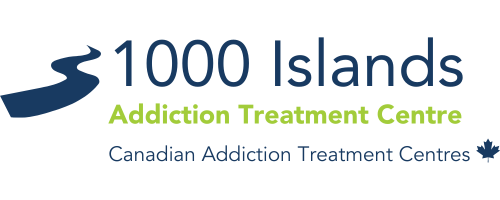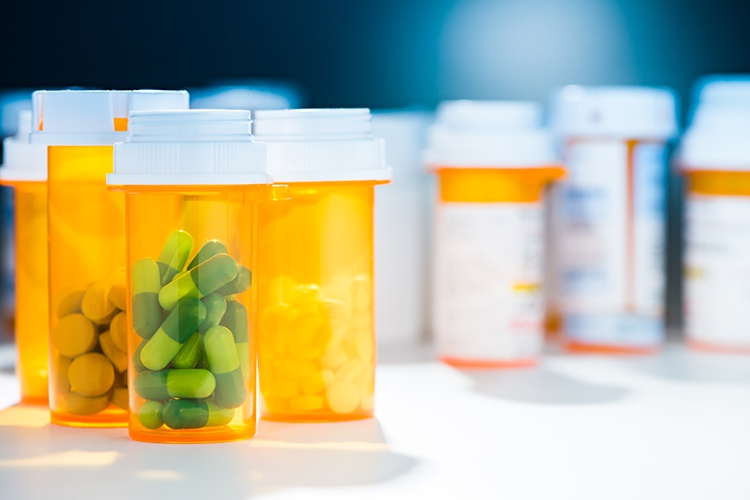Prescription Drug Treatment in Ontario
Prescription medicine addiction and the associated withdrawal symptoms are difficult to overcome without professional help. There are many kinds of prescription drugs that can be misused and lead to addiction, including prescription opioids, stimulants and central nervous system (CNS) depressants.
At 1000 Islands Addiction Treatment Centre, our expert team is specialized in treating all kinds of substance use disorder safely and effectively, with addiction treatment plans tailored to the individual. Learn more about prescription drug addiction treatment near Toronto, Ottawa and surrounding areas.
CALL OUR TOLL-FREE HELPLINE NOW AT 1-855-929-4045 or SEND US A MESSAGE
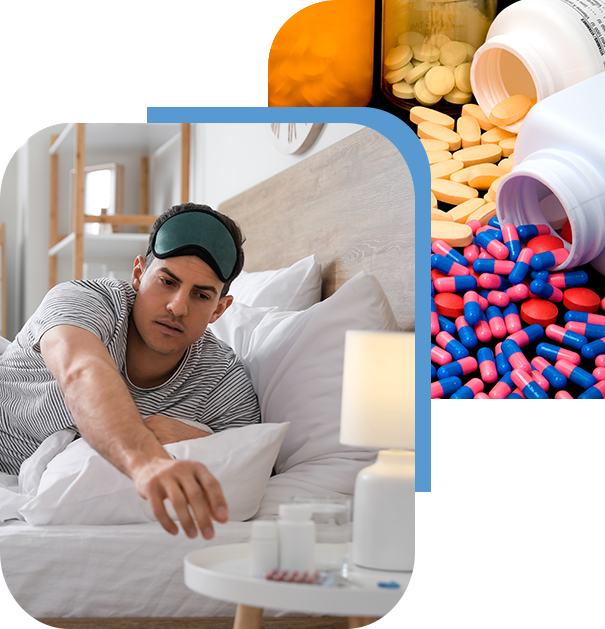
Prescription Sedatives
Prescription drug addiction for sedatives is quite common especially for those that need treatment for anxiety and insomnia. There is a tendency for sedative abuse for those seeking the calming and numbing effects. Some of the drugs that are part of prescription drug addiction include Nembutal, Ativan, Xanax, and Ambien. Addiction means that individuals can no longer function without the drug. If doctor administered prescriptions are concluded addicts will seek out illegal avenues to obtain a supply.
Prescription Opioids
Some of the opioids include methadone, codeine, morphine, and oxycodone. Prescription drug dependence to opioids is typically as a result of increased dosage required for pain management. Just like sedatives when a doctor prescription runs out, addicted individuals will seek out illegal avenues. Illegal streams sometimes contain other drugs such as cocaine, heroin or other drugs.
Prescription Stimulants
Some of the most common stimulants that cause addiction include amphetamines. This prescription drug is typically used for the treatment of health conditions such as obesity and Attention Deficit Disorders. Addiction occurs when people can not function with the drugs. Stimulants give alertness, energy and a heightened state of awareness. When a doctor prescribed stimulant is stopped it leads individuals to seek out illegal means.
CALL OUR TOLL FREE HELP LINE NOW 855 885 5805
Exploring The Scope Of The Situation
According to a recent report from the National Centre for Biotechnology Information, opioid prescriptions alone have surged more than 3,000 percent in Canada over the last three decades. Sedatives and stimulants haven’t increased quite to that extent, but they’re on an upward trend as well.
In most cases, people’s experiences with these medications start out harmlessly enough.
Physicians prescribe them for legitimate medical issues or well-meaning friends or loved ones share some of their medications with others. Still, matters all too often get out of hand after the fact.
As the number of prescriptions being handed out has grown over the years, so has the number of people ultimately abusing these medications. An estimated eight people die and sixteen are hospitalized each day across the nation due to opioid misuse. Thousands more are negatively affected by other medications meant to help rather than harm.
Prescription abuse is creating hardships for individuals, families and even entire communities. In turn, it’s having a negative impact on the entire nation. Despite the widespread and continually growing prevalence of the problem, few people truly realize its causes and consequences.

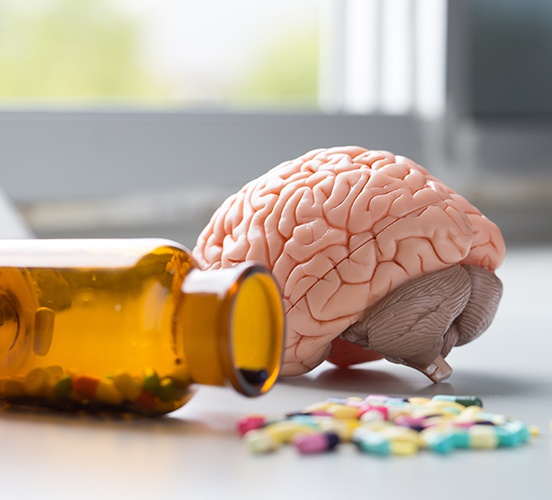
Why Do People Abuse Prescription Drugs?
As is the case with virtually all substances, whether controlled, illegal or otherwise, prescription abuse comes from a number of causes. As mentioned, it often starts out as a true medical need. Sometimes, simple curiosity kick-starts the process. Peer pressure can’t be ignored because it’s growing stronger by the year.
Some people take sedatives or prescription painkillers to help them be more outgoing in social situations or to overcome occasional stress. Stimulants are often abused because of their side effects. Though they’re meant to ramp up the central nervous system, they actually generate an opposite reaction for those with ADD and ADHD because their bodies are wired differently. This is why they’re prescribed for these conditions.
When taken by someone without these or other disorders for which they’re helpful, they can provide an energy boost, increase focus and clarity and act as an appetite suppressant to help with weight loss. Over time, occasional or temporary misuse grows into something more harmful.
OverDigging Deeper into the Situationd
Genetic predisposition is a major component in countless cases of prescription drug abuse. In short, it often runs in the family. Those with relatives who suffer from substance abuse disorders live with an increased risk of misusing alcohol, Marijuana, Cocaine, Heroin, Alcohol, prescription medications or other drugs themselves. Of course, several other aspects factor into the equation as well.
Underlying Mental Disorders
Studies have shown those with underlying, often undiagnosed conditions like anxiety or depression are more than twice as likely to become dependent on prescription painkillers. People suffering from chronic pain also have a tendency to abuse drugs not meant to treat their immediate symptoms, like sedatives or stimulants.
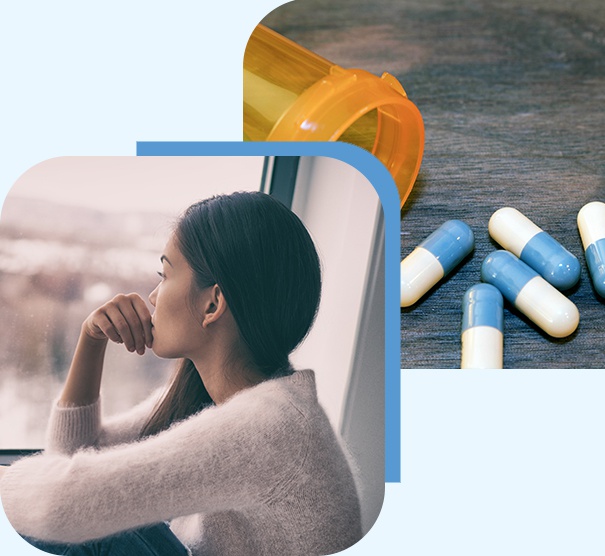

Additional Medical Conditions
Along those same lines, people with dopamine or serotonin deficiencies are at greater risk of becoming addicted to prescription drugs. Dopamine is a mood and concentration enhancer whereas serotonin reduces social anxiety, regulates sleep and helps improve memory among other benefits.
Conditions such as Parkinson’s disease, depression and schizophrenia are known to cause low dopamine levels; on the other hand, anxiety, OCD and similar issues can decrease serotonin levels.
Opioids increase dopamine and serotonin levels. Stimulants generally boost dopamine production while sedatives cause spikes in serotonin levels.
The Fear Factor
Pain, be it emotional or physical, is a powerful motivator. Commonly abused prescriptions are designed to ease different types of pain in one way or another whether they’re caused by injuries, depression, emotional trauma, nerve disorders or any other issue. These medications do legitimately serve their purposes for their respective conditions; otherwise, no one would be inclined to take them in the first place.
Here’s where the problem begins for a number of people. What if their symptoms come back after the meds are out of their systems? No one wants to experience pain or misery, so they keep taking the prescriptions just in case.
Prescription Drug Inpatient vs Outpatient Counselling
There is no one-size-fits-all approach to prescription drug addiction treatment, and as such there are various kinds of programs available. It’s worthwhile to explore the advantages and disadvantages of each fully to understand what addiction treatment approach may be best for you or your loved one.
Inpatient Prescription Drug Addiction Treatment Program
Inpatient addiction treatment, also often referred to as rehab, involves staying overnight at a treatment centre for an extended time, usually over a month. Stays can last 42 days and more depending on the individual’s needs.
Pros
-You’ll be fully immersed in the recovery setting, allowing you to focus completely on healing away from regular routines, habits, and substances.
-Though it varies at each centre, you’ll have access to onsite activities and amenities including chef prepared meals, sports and hiking trails, fitness and recreation centres, and much more that may be unique to the setting or season.
-Onsite detox facilities provide medical supervision and medication assisted treatment to manage withdrawal symptoms safely and effectively and ensure you’re able to completely focus on recovery.
-Meet peers in recovery and participate in group activities to strengthen bonds. The recovery community is an important source of strength and guidance on your journey, and you’ll be closer to peers through in-person connections.
-Access to onsite medical counselling and support. You’ll never be without someone to reach out to for advice or concerns while at a rehab centre.
Cons
-The cost of staying at an inpatient addiction treatment facility is typically much higher than alternatives, because the client also receives full accommodations that contribute to the price such as their room, amenities, etc.
-It is a big time commitment to attend an inpatient treatment program. You’ll have to be away from most responsibilities and unfortunately, not everyone is able to take that time away from work, school, caregiving roles, and other obligations.
-There is less flexibility in an inpatient program as activities are scheduled and there are various rules to abide by to promote recovery, including limited access to personal devices. While these rules are in place for therapeutic purposes, some individuals may not adjust well to the regimen.

Outpatient Prescription Drug Addiction Treatment Program
With outpatient addiction treatment, you’re not staying overnight at a rehab centre which is a significant change compared to an inpatient treatment program. Instead, you’ll meet regularly with a therapist, counsellor, or both, at predetermined meeting times. These meetings may also vary between individual and group sessions.
Pros
-There is more flexibility with outpatient programs. If you have responsibilities you must maintain, you may be able to attend treatment outside of those activities without disrupting them.
-The cost of outpatient programs is typically much less than an inpatient program, because it does not include accommodations, food, recreation, etc.
Cons
-These programs are typically less regimented, placing more onus on the individual to resist urges and cravings between their therapy or counselling appointments. Because of this, the program might not be suitable for individuals with more intense addiction issues.
-Outpatient programs won’t immerse you in the recovery setting and community as well as an inpatient centre can. You’ll be exposed to the same daily stresses and triggers that may contribute to your substance use, and may feel the same sense of community.
-You will may need to manage withdrawal symptoms without the support of medically supervised detox.
Frequently Asked Questions
What is prescription drug addiction?
This is defined as the continued misuse of prescription drugs despite a negative impact on your life and/or being unable to cease use despite wanting to stop. Prescription drug addiction most commonly involves the use of prescription opioids, prescription stimulants, or prescription sedatives without accordance to a prescribed regimen.
How can prescription drug addiction be diagnosed?
Prescription drug addiction as with other kinds of addiction should be diagnosed by a professional such as an addictions psychiatrist, psychologist or counsellor.
How can one seek help for prescription drug addiction in Ontario?
You can begin by connecting an addiction treatment centre or service provider such as 1000 Islands Addiction Treatment Centre. You may also wish to explore various kinds of treatment approaches to determine the one that suits your unique needs best.
How can one prevent prescription drug addiction?
The most important way to avoid prescription drug addiction is to only take prescription medications as instructed and to work closely with your doctor to therapeutically adjust the medication appropriately. You can also learn about the signs and symptoms of prescription drug misuse in order to address it early.
Sometimes, co-occurring mental health disorders can lead to and/or exacerbate substance use disorders. Utilizing mental health services is and attending to your mental health is another way to combat addiction.
